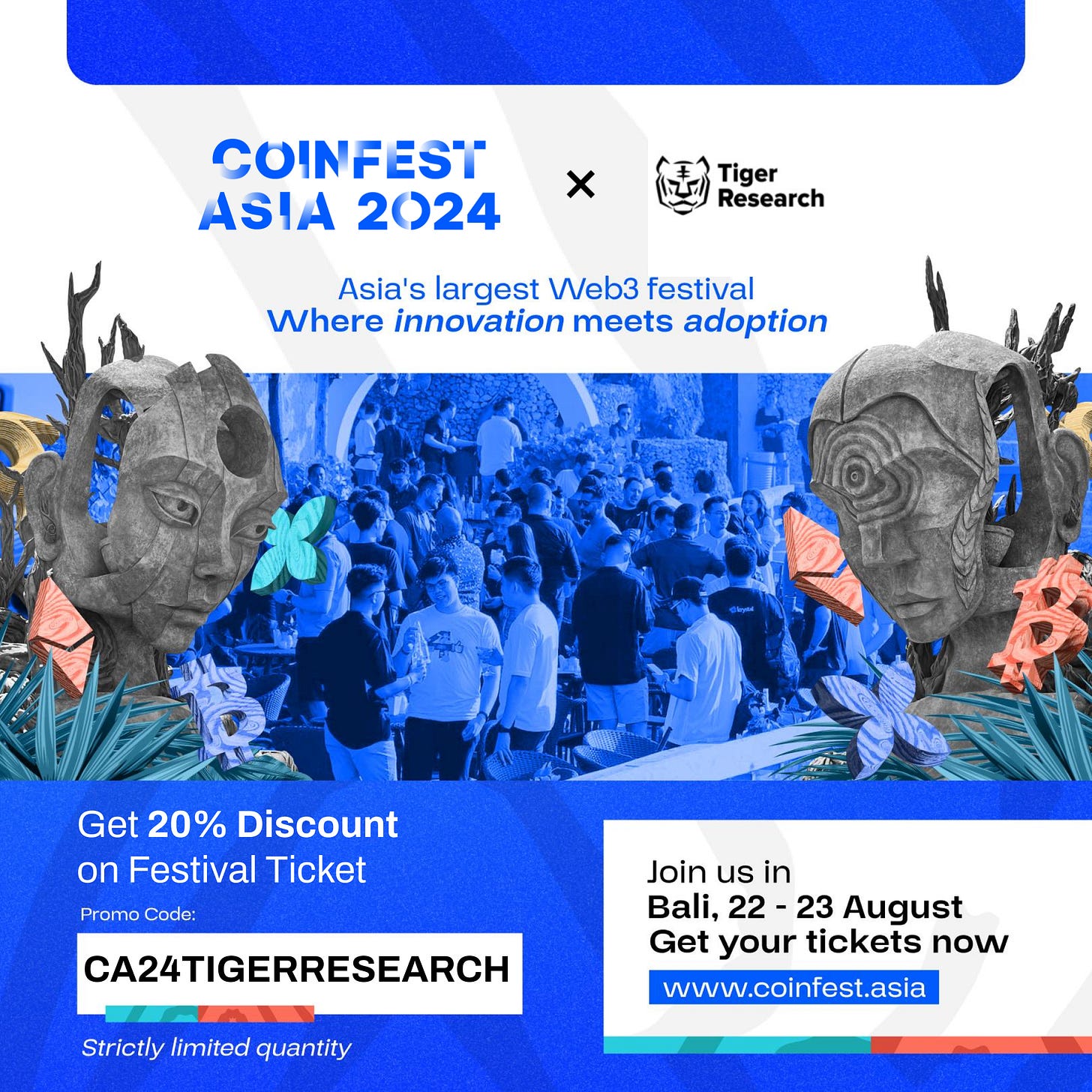Are Web3 Games Still Popular in Southeast Asia
How Has the Market Changed After the P2E Gaming Boom
TL;DR
The sharp decline in the cryptocurrency market has caused many P2E games to suffer, leading to a significant drop in users from Southeast Asia. Despite this, Southeast Asian users are still an important demogrpahic, accounting for significant web traffic for major Web3 games.
Web3 gaming thrives in Southeast Asia for three reasons: it remains a significant income source, success stories are a powerful motivator, and a lenient regulatory environment supports market vitality.
The core value of Web3 gaming, rewarding users, ensures Southeast Asian users will continue playing a key role. Additionally, the region's unique characteristics such as Web3 guilds and internet cafe culture will positively impact market development.
1. Introduction
Southeast Asia is a key market for Web3 games and one that many game companies are looking to expand into. This is because the region has a large young population that is familiar with Web3 culture, and the popularity of the P2E model in the past has already established a strong user base.
However, with the decline in token prices, there has been a sharp decline in investment-oriented users, and some say that the market is no longer as attractive as it once was. This raises the question of whether the Southeast Asian market is still high priority for for Web3 game companies. In this report, we analyze the current state of the Web3 gaming market in Southeast Asia and take a closer look at whether it remains attractive and what opportunities and challenges it presents.
2. Are There Still Many Web3 Game Players in Southeast Asia?
The number of Web3 game users in Southeast Asia has indeed decreased significantly due to the overall price decline in the cryptocurrency market. Many players in the region had become so invested in P2E games that they took out loans to participate, resulting in financial losses and a large-scale exit from the market.
However, despite this decline, Southeast Asia still accounts for a significant percentage of Web3 game users. While there is no denying the downward trend in the market, the percentage of Southeast Asian players participating in recently released Web3 games remains high. In fact, an analysis of the web traffic for major Web3 games over the past three months reveals that countries such as the Philippines and Indonesia continue to make up the core user base.
In addition to website traffic, the popularity of the Southeast Asian region is also evident in the channel selection by Discord country for the Web3 game Pixels. As can be seen above, the number of players from Southeast Asian countries is notably high, accounting for about 53% of the total. We estimate that their continued interest in Web3 games and high engagement rates are driven by the following three factors:
2.1. Web3 Games Still Make Money
The primary reason users in Southeast Asia are actively participating in Web3 games is a financial one. Web3 gaming is still viewed as an opportunity to earn a meaningful income. For example, while the daily minimum wage in the Philippines is around $10, P2E games can provide a comparable, and sometimes higher, income.
According to recent interviews with gamers playing Pixels, one of the most popular P2E games, a casual player can earn around 50 $PIXEL tokens ($11) per day with 4-8 hours of play. Intermediate players can earn up to 200 $PIXEL ($45), and advanced players can earn up to 400 $PIXEL ($92). When considering the potential for additional earnings as the token price increases, these earnings remain attractive to users in Southeast Asia.
2.2. Successful Stories Exist
Another reason many people get involved in Web3 gaming is the presence of success stories in P2E gaming. Past successes, such as those from the Axie Infinity era, continue to influence many Web3 game players. For instance, Aaron Ramos, a young Filipino player, famously bought two houses with the money he earned from playing Axie Infinity. Success stories like these highlight the potential for significant financial gain from P2E gaming and serve as a strong motivator for players in Southeast Asia. Although there are more cases of financial losses, the fear of missing out (FOMO) plays a large role in sustaining interest.
2.3. Relatively Lenient Regulatory Environment
Southeast Asia lacks a clearly defined regulatory framework for Web3 games, which seems to have positively impacted market development in the short term. This lenient regulatory environment lowers the entry barriers for both game developers and users, enhancing market dynamism.
Survey results of Korean gamer sentiment regarding P2E games (n=6,324)
To better understand this, we can look at the case of South Korea. In South Korea, strict regulations make it virtually impossible for P2E games to operate. As a result, P2E games are perceived as illegal and difficult to monetize in South Korea and are generally viewed negatively. This contrasting situation explains why Southeast Asia has a relatively favorable position in the Web3 gaming industry.
3. Challenges and Opportunities in Southeast Asia
Southeast Asia holds a significant presence in the Web3 gaming market with a strong user base. However, several challenges in these markets are also evident.
The problem of token farming operations is pervasive in the Web3 gaming industry. This issue is not limited to Web3 games alone. For instance, Vietnamese users recently participated so heavily in a HashKey airdrop event that HashKey blocked Vietnamese phone numbers, suspecting them of creating such operations.
Even if users are not engaging in token farming, another issue arises: users can be overly motivated by rewards. The problem here is that if rewards are reduced or eliminated, users lose a strong incentive to stay engaged. This can result in a significant drop in meaningful contributors in the long run, which can be detrimental to the ecosystem.
Nonetheless, reward-driven incentives remain an important factor to Web3 game operations. Sensitivity to rewards is what drives engagement in Web3 games, and Southeast Asian users are not afraid to invest for rewards. While not all engagement may be driven by long-term, healthy motivations, this active participation plays an important role in shaping the nascent ecosystem of Web3 games.
This also leads to high in-game purchase rates, making it an even more important market for game companies. While Southeast Asia has been known traditionally for low purchasing power, Web3 games are showing more aggressive payment behavior from the region, resulting in high in-app purchase volumes. This is especially evident in the Philippines and Thailand, where WeMade’s Night Crow and Mir 4 rank third and fourth in terms of in-app revenue, respectively. All in all, these challenges and opportunities demonstrate that the Web3 gaming market in Southeast Asia is a complex market with great potential.
4. Conclusion
While the Web3 gaming model has undergone some changes in recent years, its core values have remained the same. For example, the immediate reward system of the P2E model has shifted to future token rewards in the P2A (Play To Airdrop) model. However, despite these changes, the fundamental principle of rewarding users still plays an important role. This is why the reward-sensitive Southeast Asia region is likely to remain a key market for the Web3 gaming industry.
The attractiveness of the Southeast Asian market is not only based on rewards but also on several other factors: 1) a large population with a low median age, 2) a user base with a high willingness to pay for Web3 games, and 3) a culture of internet cafes and Web3 guilds, which are expected to play an important role in the development of the Web3 game market.
The Web3 gaming market is still in its infancy, and the role of the Southeast Asian market is crucial at this point. Users in the region are actively participating and contributing to the development of the games. With Web3 games needing more stress testing, the Southeast Asian market is acting as a testbed for mass adoption. While there may be some challenges in the short term with regards to stable user acquisition, this provides an opportunity to validate and improve various elements of Web3 gaming.
In conclusion, Southeast Asia remains an attractive market for Web3 games. Web3 game companies need to be able to understand and capitalize on the unique characteristics of the region to achieve growth and development.
🐯 More from Tiger Research
Read more reports related to this research.[Special Report] The Giant of Southeast Asia, Indonesia Web3 Market Report
[Special Report] APAC Web 3 Powerhouse : Inside Vietnam's Blockchain Market
Disclaimer
This report has been prepared based on materials believed to be reliable. However, we do not expressly or impliedly warrant the accuracy, completeness, and suitability of the information. We disclaim any liability for any losses arising from the use of this report or its contents. The conclusions and recommendations in this report are based on information available at the time of preparation and are subject to change without notice. All projects, estimates, forecasts, objectives, opinions, and views expressed in this report are subject to change without notice and may differ from or be contrary to the opinions of others or other organizations.
This document is for informational purposes only and should not be considered legal, business, investment, or tax advice. Any references to securities or digital assets are for illustrative purposes only and do not constitute an investment recommendation or an offer to provide investment advisory services. This material is not directed at investors or potential investors.
Terms of Usage
Tiger Research allows the fair use of its reports. ‘Fair use’ is a principle that broadly permits the use of specific content for public interest purposes, as long as it doesn't harm the commercial value of the material. If the use aligns with the purpose of fair use, the reports can be utilized without prior permission. However, when citing Tiger Research's reports, it is mandatory to 1) clearly state 'Tiger Research' as the source, 2) include the Tiger Research logo, and 3) incorporate the original link to the report. If the material is to be restructured and published, separate negotiations are required. Unauthorized use of the reports may result in legal action.










